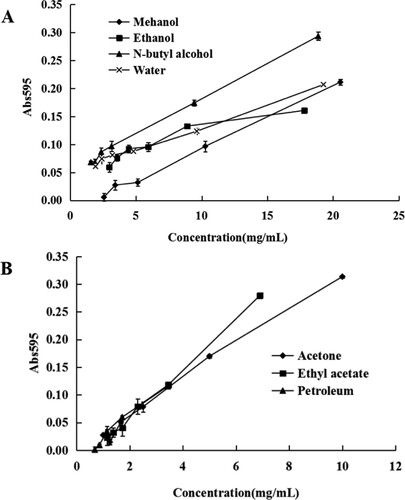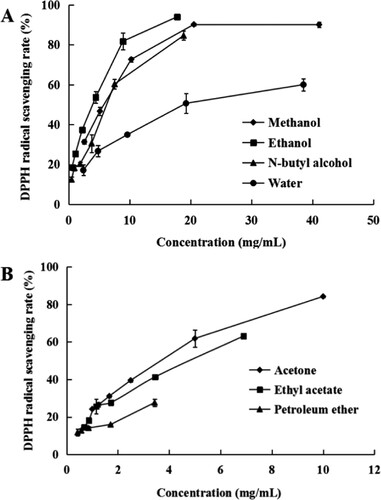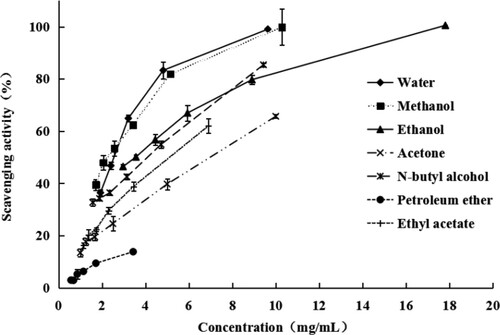Figures & data
Table 1. The biocompound content of the Camellia pollen extracts.
Table 2. Lipase inhibitory ability and antioxidant activity of the Camellia pollen extracts.
Figure 2. FRAP values of the Camellia pollen extracts. (A) FRAP values of methanol, ethanol, N-butyl alcohol, and water extracts. (B) FRAP values of acetone, ethyl acetate, and petroleum ether extracts.

Figure 3. DPPH radical-scavenging ability of the Camellia pollen extracts. (A) DPPH radical-scavenging ability of Methanol, ethanol, N-butyl alcohol, and water extracts. (B) DPPH radical-scavenging ability of acetone, ethyl acetate, and petroleum ether extracts.

Figure 4. Lipase inhibitory activity of the Camellia pollen extracts. (A) Lipase inhibitory activity of the Methanol, ethanol, and water extracts. (B) Lipase inhibitory activity of Acetone, N-butyl alcohol, ethyl acetate, and petroleum ether extracts.

Table 3. The correlation coefficient between the components’ content of pollen extracts and the antioxidant activity.
Table 4. The correlation coefficient between the components’ content of pollen extracts and the lipase inhibitory activity.
Table 5. Oil content and fatty acid content of Camellia pollen extracts.
Data availability statement
The data that support the findings of this study are openly available in the Figshare repository at https://doi.org/10.6084/m9.figshare.20544090.v1 and https://doi.org/10.6084/m9.figshare.20218853.v3.

